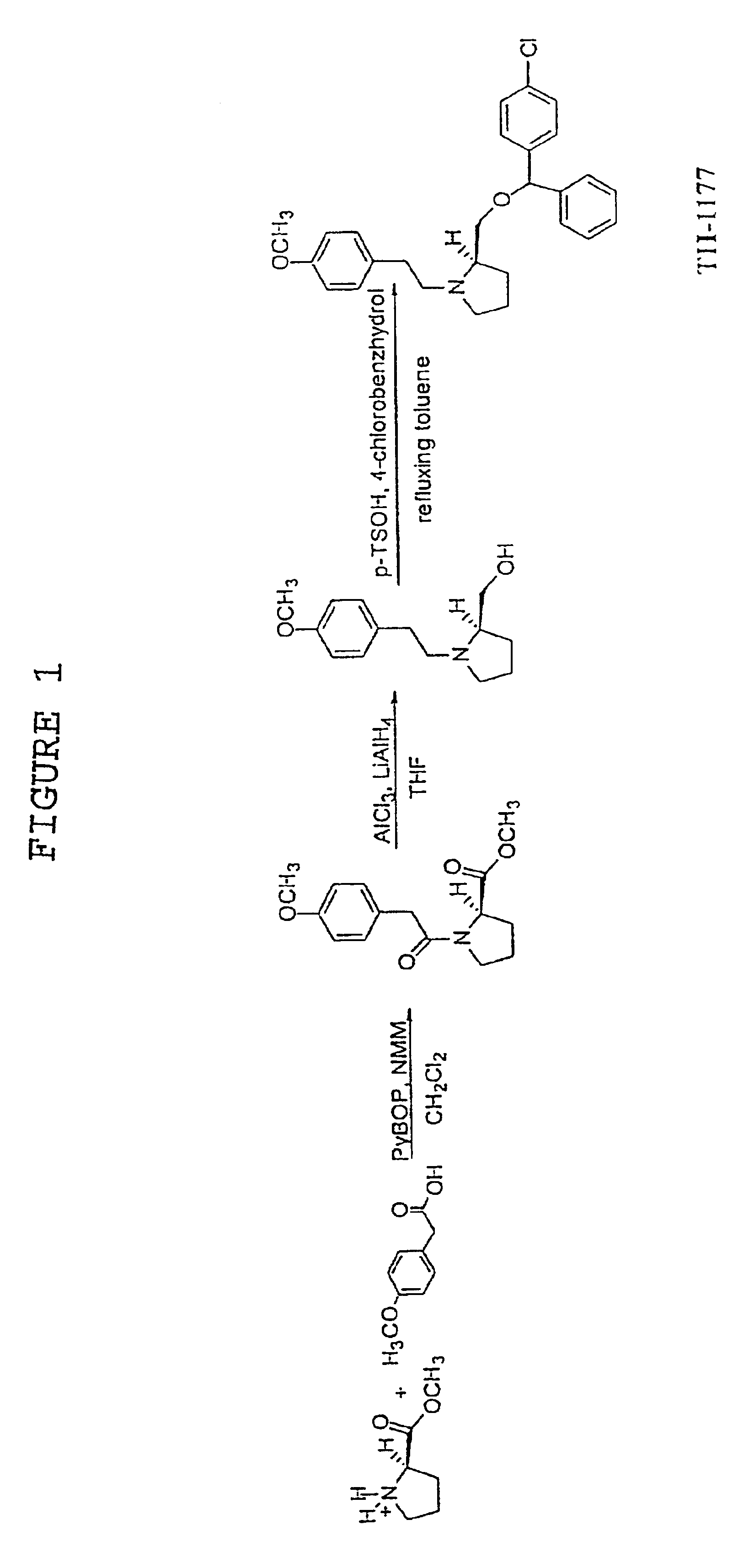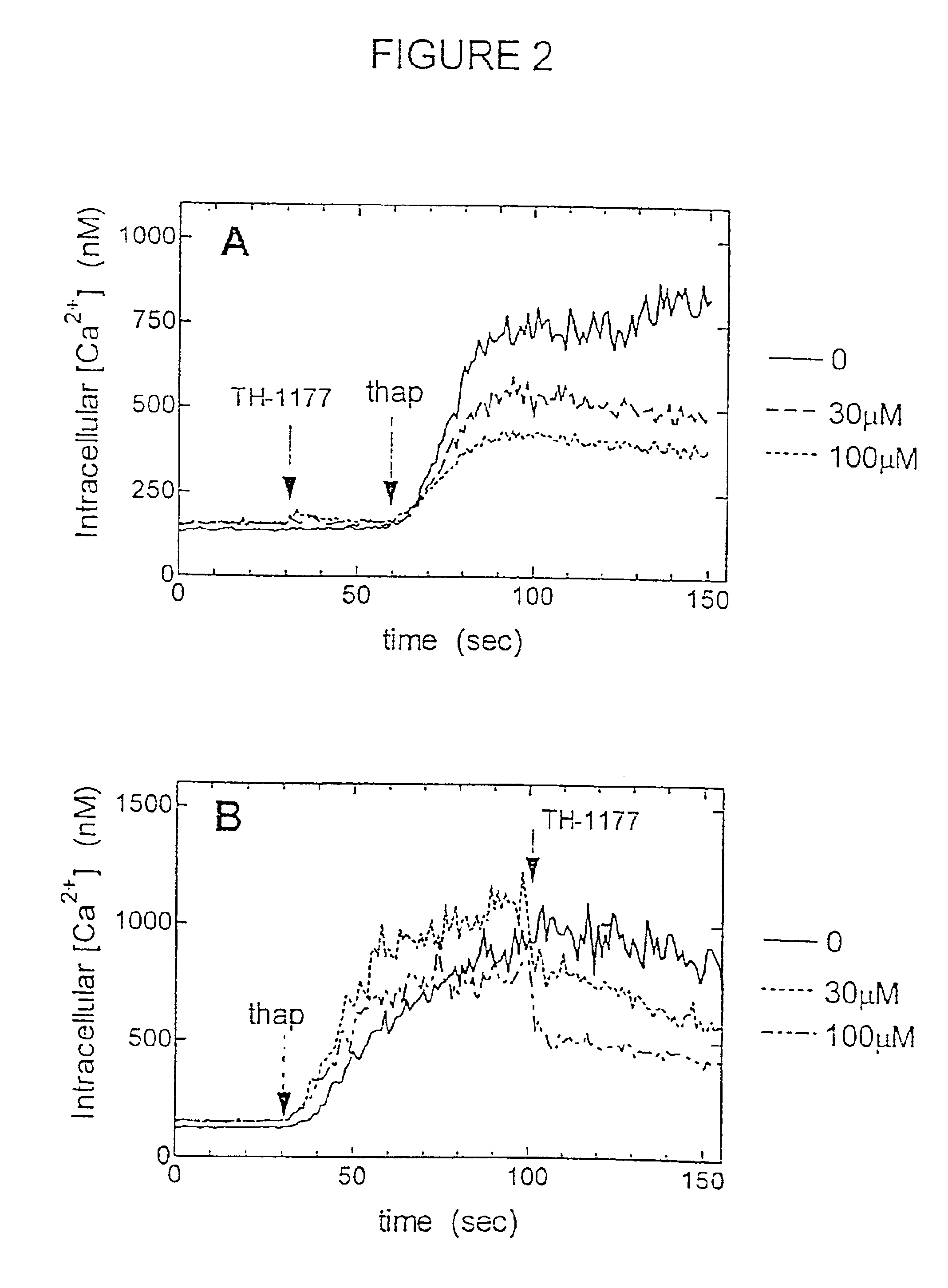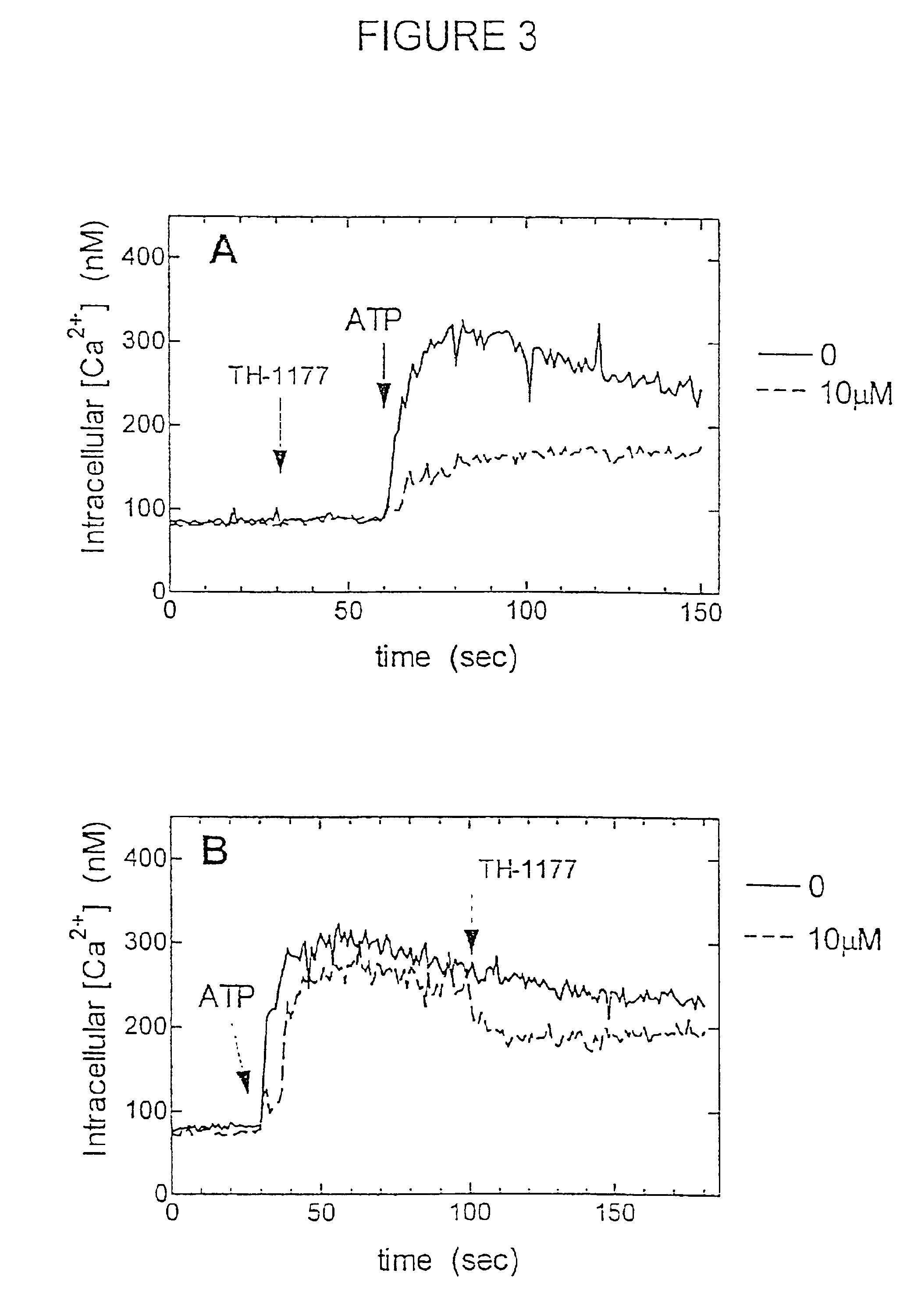Anticancer calcium channel blockers
a calcium channel blocker and anticancer technology, applied in the field of compounds useful as cancer cell inhibitors, can solve the problems of hammering this outcome, complex molecular role of growth factors and their corresponding receptors in malignant transformation and cancer progression, and not yet well understood
- Summary
- Abstract
- Description
- Claims
- Application Information
AI Technical Summary
Benefits of technology
Problems solved by technology
Method used
Image
Examples
example 1
[0184]TH-1177 blocked capacitative Ca2+ entry in human prostate cancer cells. In electrically non-excitable cells, Ca2+ influx is triggered by release of Ca2+ from its internal storage depot by a phenomenon that has been called “capacitative”Ca2+ entry (Putney, J. W., Jr. (1986) Cell Calcium, 7:1-12; Haverstick, et al. (1993) Mol. Biol. Cell, 4: 173-184; Kohn, et al. Proc. Natl. Acad. Sci. USA, 92: 1307-1311, incorporated herein by reference). Capacitative entry can be initiated by treatment of cells with thapsigargin. Thapsigargin inhibits the Ca2+-ATPase of the endoplasmic reticulum allowing uncompensated leak of Ca2+ from this compartment into the cytosol thereby causing Ca2+ entry in the absence of engagement of a specific receptor. (Thastrup, et al. (1990) Proc. Natl. Acad. Sci. USA, 87: 2466-2470; Takemura, et al. (1989) J. Biol. Chem. 264: 12266-12271, incorporated herein by reference).
[0185]Ns shown in FIG. 2A, addition of TH-1177 to a suspension of LNCaP human prostate canc...
example 2
[0186]TH-1177 Inhibited Receptor-Linked Ca2+ Entry.
[0187]The P2 purinergic receptor is linked to activation of the Ca2+ entry pathway in many types of cells including prostate cancer cells (Fang, et al. (1992) J. Clin. Invest. 89: 191-196). The ability of TH-1177 to block capacitative Ca2+ entry induced by thapsigargin indicated that this compound block Ca2+ entry triggered by the engagement of a specific receptor. The P2 receptor binds extracellular ATP inducing multiple biochemical events including Ca2+ entry (Fang, et al. supra). Addition of ATP to LNCaP prostate cancer cells resulted in a rapid rise in [Ca2+]i, that was inhibited by the prior addition of TH-1177 (FIG. 3A). As shown in FIG. 3B, TH-1177 added after ATP also caused a reduction in the [Ca2+]i that had been augmented by P2 receptor engagement.
[0188]PC3 prostate cancer cells also demonstrated an increase in [Ca2+]i when stimulated by ATP (FIG. 3). Ir. the experiment depicted in FIG. 4A, TH-1177 was added before the ce...
example 3
[0191]TH-1177 Inhibited Prostate Cancer Cell Proliferation in vitro by a Cytostatic Mechanism.
[0192]Inhibition of Ca2+ entry has been shown to limit proliferation of cancer cells in vitro. The ability of TH-1177 to block Ca2+ entry induced by release of Ca2′ from internal stores such as that stimulated by engagement of the P2 purinergic receptor suggested the possibility that this agent could inhibit proliferation of prostate cancer cells in vitro.
[0193]As shown in FIG. 6, TH-1177 caused a concentration dependent inhibition of the proliferation of both LNCaP and PC3 cells. The IC50 for inhibition of LNCaP proliferation was 4 μM (FIG. 6A) while the value for PC3 prostate cancer cells was 14 μM (FIG. 6B). When compared to the IC50 values for inhibition of Ca2+ entry of 3 μM and 16 μM for LNCaP and PC3 cells, respectively, it was clear that TH-1177 inhibited proliferation at a concentration that was similar to that which was needed to block Ca2+ entry in these two cell types.
[0194]Most...
PUM
| Property | Measurement | Unit |
|---|---|---|
| w/w | aaaaa | aaaaa |
| w/w | aaaaa | aaaaa |
| w/w | aaaaa | aaaaa |
Abstract
Description
Claims
Application Information
 Login to View More
Login to View More - R&D
- Intellectual Property
- Life Sciences
- Materials
- Tech Scout
- Unparalleled Data Quality
- Higher Quality Content
- 60% Fewer Hallucinations
Browse by: Latest US Patents, China's latest patents, Technical Efficacy Thesaurus, Application Domain, Technology Topic, Popular Technical Reports.
© 2025 PatSnap. All rights reserved.Legal|Privacy policy|Modern Slavery Act Transparency Statement|Sitemap|About US| Contact US: help@patsnap.com



